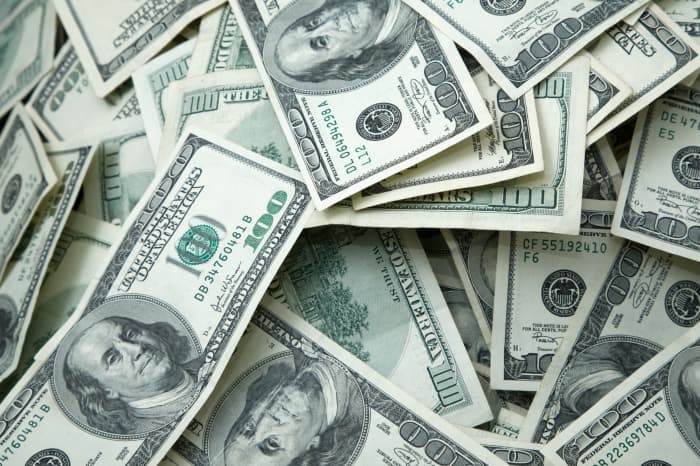
Americans haven’t seen yields like this in nearly 15 years, pros say. That said, your average bank isn’t paying much.
Getty Images
Despite the Fed raising rates multiple times over the past year, most financial institutions are still paying a paltry amount on their savings accounts. But there are very notable exceptions that pros say are worth a look right now. “The top-yielding, nationally available savings accounts are paying above 4%, and banks are still very much in the mode of increasing their payouts. Not only are these accounts available nationwide, but many of the accounts yielding above 4% require no minimum deposit, so they’re literally available to everyone” says Greg McBride, chief financial analyst at Bankrate. (You can see the highest savings account rates you may get now here.)
Americans haven’t seen yields like this in nearly 15 years, pros say: “With interest rates rising, the most competitive savings accounts offer yields last seen in 2009, and they continue to climb,” says McBride. That said, your average bank isn’t paying much, as we showcase below.
The latest savings rates
Below are the latest average rates on savings accounts, according to data from Bankrate from February 8.
| Account | Average rate paid |
| Money Market Account | 0.39% |
| Savings $10K | 0.23% |
| Savings $25K | 0.47% |
| Savings $50K | 0.47% |
| Higher Yielding Savings Accounts | 0.83% |
How much do you need in savings?
There’s no magic number, but pros generally recommend keeping anywhere from 3-12 months of essential income in an emergency fund. Factors like your age, marital status and career all play a part in exactly how much emergency savings you need. Here’s what both Dave Ramsey and Suze Orman say you should have in your emergency fund.
As for where to put that money, McBride says, “a high-yielding savings account is the perfect place for your emergency fund — accessible but just far enough out of reach that you’re less tempted to raid it for discretionary spending.” You can see the highest savings account rates you may get now here.
In addition to an emergency fund, you may also want to have additional accounts where you save for short-term goals, like buying a home in the next 6 months, or taking a vacation in the near future. And of course, you’ll want to be saving and investing for retirement.
Where to put your money: Savings account vs. MMAs
Experts generally agree that you should put your emergency fund money somewhere safe, like a high-yield savings account or a money market account.
The perks of savings accounts are plentiful, but some of the biggest include flexibility, ease of saving, earning interest and knowing your money is protected. There can be drawbacks of having your money in high-yield savings accounts too, like fees when you’ve exceeded the maximum number of withdrawals in a month. And in the long run, these accounts aren’t ideal for all of your savings because they don’t pay as much interest as some other vehicles and investments.
Another account-type to consider is a money market account (MMA); they’re savings accounts that have debiting and check-writing abilities accompanied by higher interest rates than traditional savings accounts. MMAs frequently have higher minimum balance requirements and usually have subpar interest rates compared to high-yield savings accounts. But if having the option to spend directly from a savings account is something that’s important for you, a MMA offers decent rates with the flexibility of writing checks or using a debit card attached to the account.
What to know before opening an MMA or savings account
Before opening a savings account, make sure you have the protection of federal deposit insurance, that you’re able to meet any balance requirements to avoid any monthly fees and that you can easily get money into and out of the account when needed. “Often, linking the account to the checking account at your current bank or credit union is an easy way to move money back and forth,” says McBride. (You can see the highest savings account rates you may get now here.)
Before opening a MMA, make sure you’re able to meet the minimum balance requirement. You should also compare the interest rate with that of a traditional savings account and a high-yield savings account to make sure you’re getting the most bang for your buck.
McBride also recommends reading the fine print and taking note of any balance limitations on earning a higher yield, any direct deposit or monthly transaction requirements to earn that yield and any geographic limitations or membership requirements.
The advice, recommendations or rankings expressed in this article are those of MarketWatch Picks, and have not been reviewed or endorsed by our commercial partners.
Source: https://www.marketwatch.com/picks/they-continue-to-climb-many-savings-accounts-are-now-paying-upwards-of-4-is-it-time-to-ditch-your-current-bank-01675894460?siteid=yhoof2&yptr=yahoo
